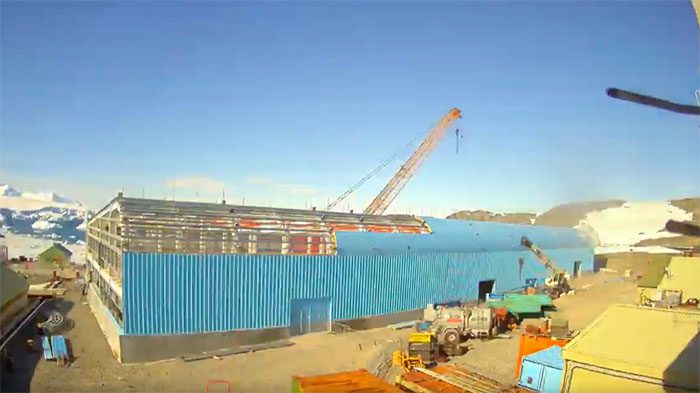The new building, covering an area of 4,500m2, is set to be completed in 2025 and is currently under rapid construction amid extremely cold weather, strong winds, snow, and glacial shifts on a continent that is not easily accessible.
Construction process of the Discovery building. (Video: BAS)
Workers are racing against time to complete significant milestones in the construction of the new two-story building named Discovery at the Rothera Research Station run by the British Antarctic Survey (BAS), reported New Atlas on April 10. The Rothera Research Station is the largest research and operational center for the UK in Antarctica.
The Discovery building is designed to withstand extreme polar conditions, utilizing energy efficiently and being eco-friendly. The construction process has been ongoing for the past four years. The construction team is striving to finish critical milestones before the Antarctic winter sets in within the next few weeks.
The project’s aim is to replace several old buildings with the new 4,500m2 structure, which is expected to have a lifespan of fifty years. The new structure is currently wrapped in a blue metal shell. An operations tower has also been erected, allowing staff to monitor the dock, research station activities, and the airport.

The new building increases the surface area-to-volume ratio, thereby achieving better energy efficiency.
The new building not only enhances the operational efficiency and scientific research capabilities of the station but also improves the surface area-to-volume ratio, resulting in better energy efficiency. The windows feature triple glazing, and the walls are well insulated. Specially designed deflectors help prevent snow accumulation on or around the building.
Additionally, Discovery includes its own power and heating plant, with a solar panel system installed on the roof. This system is particularly beneficial since the Sun does not set for six months here, while in winter, the base is nearly deserted except for a core group of essential staff.
According to BAS, the new building will reduce carbon emissions for the entire research station by 25%. Construction will continue in November this year, and Discovery is expected to be completed by 2025.


















































